Repairing Water Damage
If your walls or ceilings get wet because of leaky plumbing or a damaged roof, first fix the leak, and then seal stains and patch drywall as necessary.
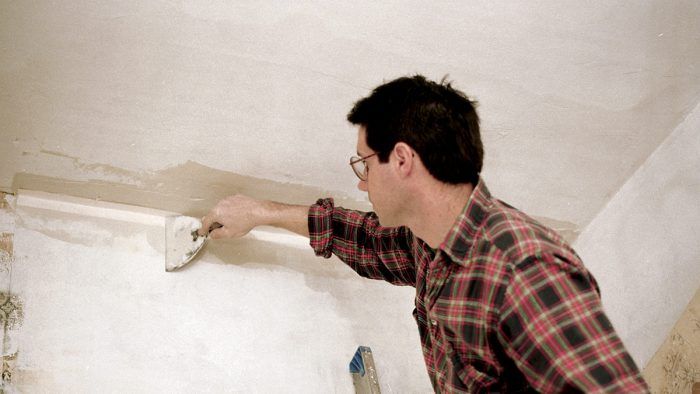
On drywall, water damage is usually confined to ceilings. Roof problems and leaky plumbing in an upstairs bathroom are two common causes of water damage. Usually, water runs along the top of the drywall until it finds a seam or corner. Once the joint compound on the seam or corner becomes wet enough, the water breaks through and runs down the wall or onto the floor. This type of leak does not usually cause extensive drywall damage, because the water found an exit and didn’t pool on top of the drywall or cause it to sag.
Before repairing the drywall, you must first fix the roof or repair the plumbing leak to prevent further damage. Next, remove any loose tape and joint compound. If the drywall has come loose, allow it to dry completely before refastening it. To prevent sagging, which is difficult to correct when reattaching a dried-out panel, prop up the drywall with a T-support or temporary furring strips. It’s a good idea to go into the attic and remove and dry out any insulation that may be wet. Removing wet insulation allows the drywall to dry faster, and it may also prevent further damage. When the drywall is thoroughly dry, it will return to its original strength and can be refastened. Re-tape any damage using the techniques described in Chapter 4.
Seal and/or RepairSmall stains from water damage can be sealed with a stain blocker and simply repainted. Larger areas of damage, whether from a leaking roof or a burst water pipe, need to be removed, cleaned, thoroughly dried, and then repaired.
|
If a section of drywall has bowed excessively between the ceiling joists because it has soaked up too much water, the affected area will need to be removed and the opening patched in the same way as for large holes. If you’re removing drywall in a contaminated area, be sure to wear safety gear to protect against airborne dust and mold. Drywall exposed to water should be replaced unless all of the following conditions are met:
- Water source or moisture is eliminated.
- Water was not contaminated.
- Drywall can be thoroughly dried out before mold grows.
- Drywall is structurally sound.
If there is ever any doubt about whether to keep or replace drywall that has been exposed to moisture, replace it.
| Mold Damage
Under the right heat and humidity conditions, mold can grow on any drywall surface. It usually occurs after the drywall has gotten wet. To correct a mold problem, you must first eliminate the source of the moisture. If the problem occurs in a bathroom (the most common location), you may need to decrease the room’s humidity with an exhaust fan, a dehumidifier, or a better supply of heat. Once the humidity problem has been corrected and the drywall has dried out thoroughly, wash off the mold stain with bleach and water (1/4 cup of bleach to 1 gal. of water). Repair any damaged areas and repaint the drywall with a mold-resistant paint. Maintain low-humidity conditions to prevent mold from recurring. |
Water Stains
Along with water damage, there will inevitably be some staining, and the stains will likely extend over a much larger area than the damage itself. Whether you’re working on drywall or old plaster walls, the repair work is the same. Refasten or replace the damaged areas as described above. Then, before taping, seal all the stained areas with a good-quality stain-killing paint. I prefer to use an oil-based rather than a latex stain killer because it better prevents water stains from bleeding through joint compound. For small areas when you don’t want to dirty a roller or brush, the spray cans come in handy.
Once the paint is thoroughly dry, patch the damaged and repaired areas, blending them into the ceiling. Before repainting, check the ceiling for any stains that may have bled through and reseal them, if necessary.

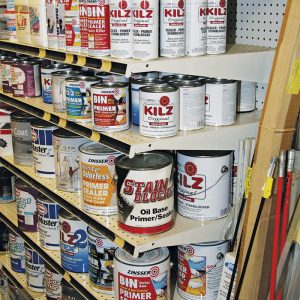
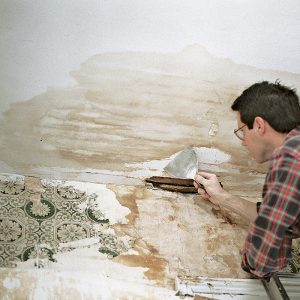
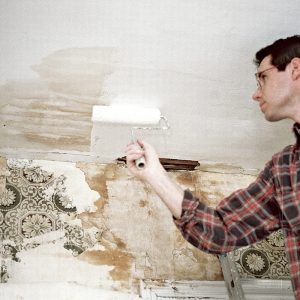
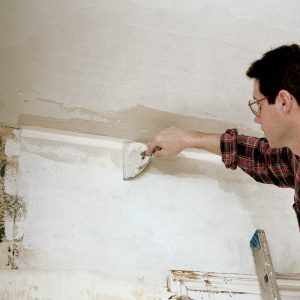





View Comments
Water damage is something that can be a serious problem if not resolved timely.
https://waterdamagerestorationeverettwa.com